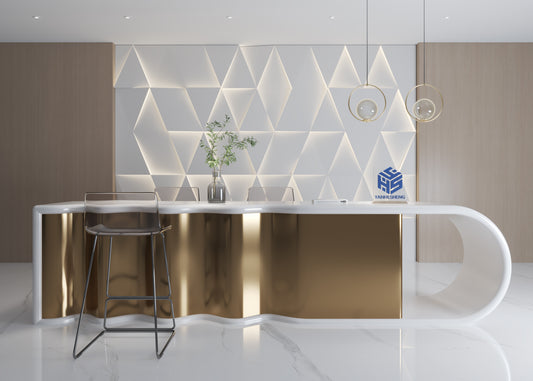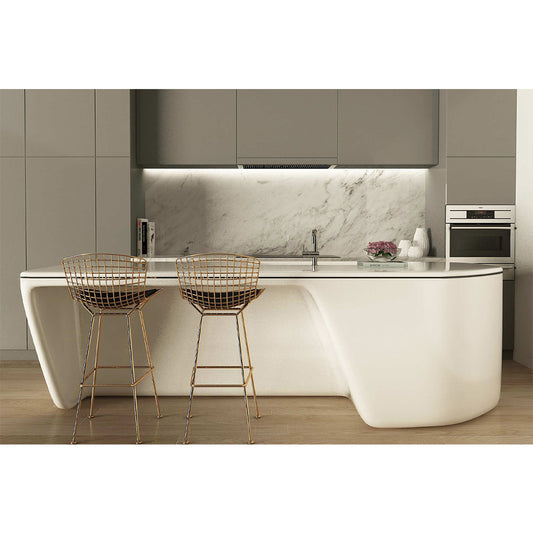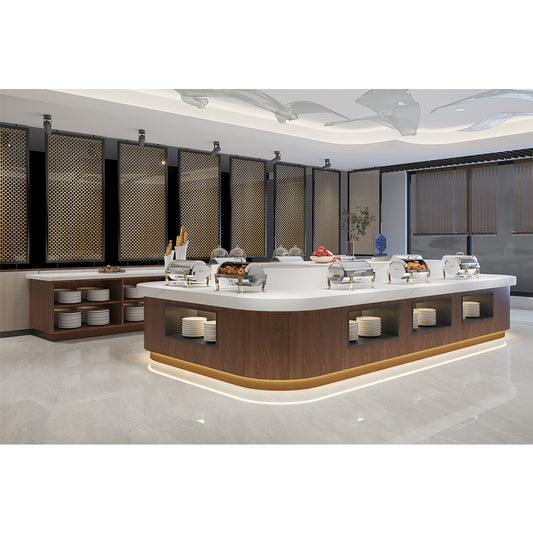Hot bending solid surface stone is a method of heating the material to a soft state, bending it through molds and tools, and then cooling it into shape. Here are the detailed steps:
Tools:
Heating equipment: industrial heat gun or professional oven
Molds and fixtures: molds and fixtures customized according to the required shape, usually made of high-temperature resistant materials. It is recommended to place a fixture every 20-30cm.
Protective equipment: protective gloves and goggles, heat-resistant gloves, to ensure safe operation.

Steps
Preparation:
Clean the work area, prepare all necessary tools and materials and clean them up. Determine the design drawing of the customized acrylic artificial stone product, make the mold according to the design requirements, and clearly know what shape is required.

Start heating:
Place the acrylic solid surface stone sheet in the oven or use a heat gun to evenly heat it to 300°F to 350°F (150°C to 180°C).
Heat the acrylic solid surface stone sheet evenly, ensuring that the entire sheet is heated evenly and avoiding local overheating. When the material reaches the required temperature and becomes soft, put on gloves and quickly place it on the mold. Use tools or hands to bend the material into the desired shape, and then fix it to the mold with a clamp. It is recommended to place a clamp every 20-30cm.

The plate is completely fixed and does not move at will until it is completely cooled. Natural cooling usually takes a few minutes to tens of minutes, depending on the thickness of the plate and the ambient temperature. After cooling, remove the clamp and material from the mold. Check the surface for bubbles, cracks or other defects. Wear goggles and protective masks. Large dust will be generated during the construction process. If conditions permit, water jet cutting can reduce a lot of dust, and then cut, grind and polish to obtain smooth edges and surfaces.

Safety Tips
During heating and bending, wear protective gloves and goggles to prevent burns and splash injuries. Make sure the working area is well ventilated to avoid inhaling harmful gases. During heating and cooling, beware of accidental touch and fire risks caused by high temperatures.





